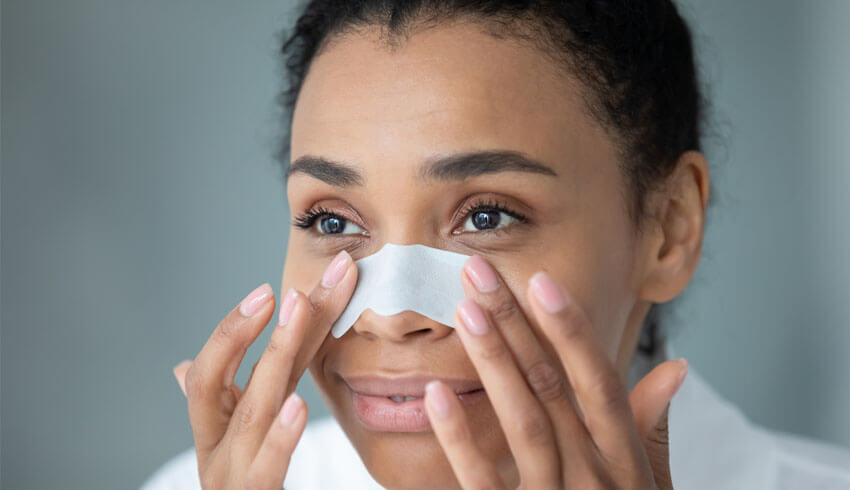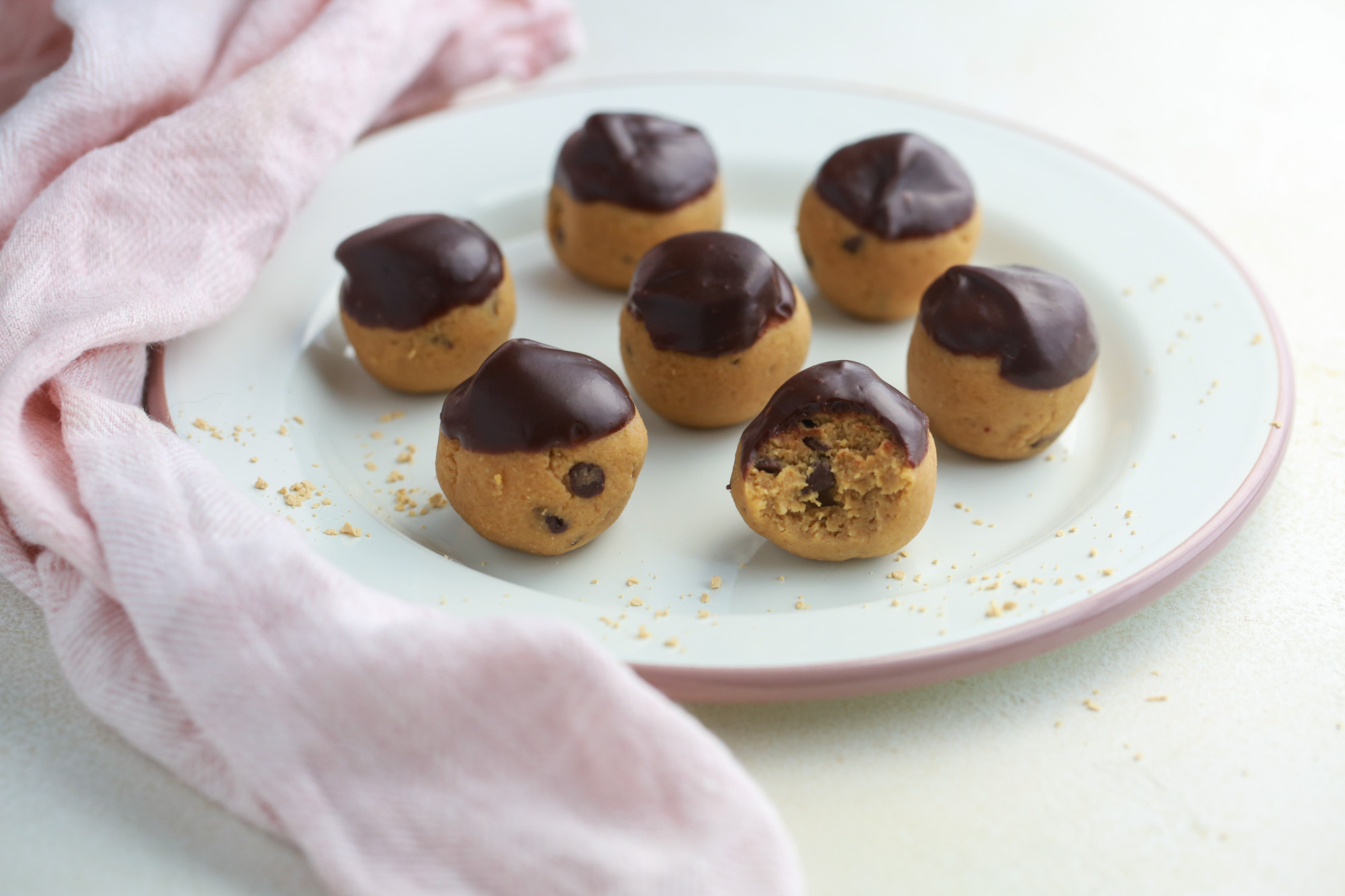Pore Strips, Glue And Other Skin Trends To Avoid
Pore Strips, Glue And Other Skin Trends To Avoid Written By (old): Marle Tyrrell If you’re anything like us, your social media feed is showing you a lot of so-called "skin care trends" that claim to help you achieve the best possible complexion. While these DIY tricks may look good on TikTok or Instagram, many of them should be skipped, especially the ones inspired by spa treatments usually performed by trained professionals. Read on to learn about some popular internet skin care trends that should be avoided — and discover some alternative treatments that are much better for your skin! Avoid: Pore Strips Pore strips (also known as blackhead strips) first hit the shelves in the 1970s. They’re back in the spotlight because people online love to share the satisfaction of peeling them off to reveal what looks like buildup, dirt and oil stripped from inside their pores. The strips’ staying power is understandable — who wouldn’t want to "empty" their pores with a simple, inexpensive product that provides such instant gratification? Unfortunately, pore strips aren’t all they’re cracked up to be. They work by forcefully pulling the oil from sebaceous filaments that line your pores and maintain your skin’s oil balance. Any redness you see post-use isn't the sign of squeaky clean skin; it's actually irritation from stripping essential oils away and disrupting the skin's protective barrier. According to Very Well Health, the benefits of a pore strip are temporary and not as impressive as the strip's residue might suggest. Oftentimes, our sebaceous filaments — which actually play a key role in your skin's hydration and oil regulation — are mistaken for clogged pores. Pore strips target these important sebaceous filaments, along with whatever else they can grab. Plus, when using them for nose blackhead removal, pore strips can only pull out a small section and can't reach larger, deeper blackheads. This means leaving a large portion behind in your skin. Without addressing the root of the problem, you’ve only partially emptied a tiny crevice that is now ready to collect new dirt and buildup. Yuck. Instead of a pore strip, opt for a chemical or finely powdered physical exfoliant. We love the Eminence Organic Skin Care Strawberry Rhubarb Dermafoliant to clear clogged pores around the nose. This fine powder works by gently removing grime or gunk without stripping the skin of the oils that work to protect it, giving you a deep clean without any damage. Avoid: Using Glue To Remove Blackheads One of the more surprising trends we’ve seen is using white glue to mimic the effects of a traditional pore strip. According to Healthline, this DIY treatment is a bad idea because “glue is not intended for human skin, and it may cause your pores to become even more clogged.” While we understand the appeal of a budget-friendly hack, we definitely couldn't recommend this one in good conscience — especially considering the nasty chemicals found in glue. Avoid greater skin issues down the line and keep the glue for your next craft project. Instead, incorporate a peel into your weekly routine. This will help keep blackheads, whiteheads and surface-level texture at bay. We love the Clear Skin Willow Bark Exfoliating Peel, a deep-cleansing, clarifying peel solution designed to refine the complexion without irritation while reducing the appearance of problem skin. Avoid: Pore Vacuums You might have seen a newer tool pop up in your skin care aisle or social media feed: the pore vacuum. Pore vacuums are handheld devices that suction onto the skin, promising to pull out any blackheads, gunk or buildup that’s settled in. But don’t believe the hype. While pore vacuums look similar to highly effective tools used by spa professionals, they are not the same. The professional tools require specialized training to treat the area without damaging the skin’s layers. According to Healthline, at-home pore vacuums can cause bruising, discoloration and scarring, especially when used by someone not trained in esthetics. Worse, if you’re prone to sensitive skin reactions or rosacea, a pore vacuum can result in broken blood vessels or capillaries. Instead, we’d recommend gommage — an exfoliating technique where a physical exfoliant is layered over a gel textured mask or treatment and gently rolled away with damp fingers after a few minutes. Gommage uses physical and chemical exfoliation to softly slough away dead skin cells and remove other debris from the skin's surface. This technique is safe to try at home with a soft touch and slow movements. Or head to your esthetician to have a professional safely perform extractions along with a gommage treatment. Keen to try it at home? Our Lead Skin Care Trainer, Natalie Pergar, recommends a combination of our Stone Crop Masque and Stone Crop Oxygenating Fizzofoliant for a gentle yet invigorating treatment. Relate


Pore Strips, Glue And Other Skin Trends To Avoid
If you’re anything like us, your social media feed is showing you a lot of so-called "skin care trends" that claim to help you achieve the best possible complexion. While these DIY tricks may look good on TikTok or Instagram, many of them should be skipped, especially the ones inspired by spa treatments usually performed by trained professionals. Read on to learn about some popular internet skin care trends that should be avoided — and discover some alternative treatments that are much better for your skin!
Avoid: Pore Strips
Pore strips (also known as blackhead strips) first hit the shelves in the 1970s. They’re back in the spotlight because people online love to share the satisfaction of peeling them off to reveal what looks like buildup, dirt and oil stripped from inside their pores. The strips’ staying power is understandable — who wouldn’t want to "empty" their pores with a simple, inexpensive product that provides such instant gratification?
Unfortunately, pore strips aren’t all they’re cracked up to be. They work by forcefully pulling the oil from sebaceous filaments that line your pores and maintain your skin’s oil balance. Any redness you see post-use isn't the sign of squeaky clean skin; it's actually irritation from stripping essential oils away and disrupting the skin's protective barrier.
According to Very Well Health, the benefits of a pore strip are temporary and not as impressive as the strip's residue might suggest. Oftentimes, our sebaceous filaments — which actually play a key role in your skin's hydration and oil regulation — are mistaken for clogged pores. Pore strips target these important sebaceous filaments, along with whatever else they can grab. Plus, when using them for nose blackhead removal, pore strips can only pull out a small section and can't reach larger, deeper blackheads. This means leaving a large portion behind in your skin. Without addressing the root of the problem, you’ve only partially emptied a tiny crevice that is now ready to collect new dirt and buildup. Yuck.
Instead of a pore strip, opt for a chemical or finely powdered physical exfoliant. We love the Eminence Organic Skin Care Strawberry Rhubarb Dermafoliant to clear clogged pores around the nose. This fine powder works by gently removing grime or gunk without stripping the skin of the oils that work to protect it, giving you a deep clean without any damage.
Avoid: Using Glue To Remove Blackheads
One of the more surprising trends we’ve seen is using white glue to mimic the effects of a traditional pore strip. According to Healthline, this DIY treatment is a bad idea because “glue is not intended for human skin, and it may cause your pores to become even more clogged.” While we understand the appeal of a budget-friendly hack, we definitely couldn't recommend this one in good conscience — especially considering the nasty chemicals found in glue. Avoid greater skin issues down the line and keep the glue for your next craft project.
Instead, incorporate a peel into your weekly routine. This will help keep blackheads, whiteheads and surface-level texture at bay. We love the Clear Skin Willow Bark Exfoliating Peel, a deep-cleansing, clarifying peel solution designed to refine the complexion without irritation while reducing the appearance of problem skin.
Avoid: Pore Vacuums
You might have seen a newer tool pop up in your skin care aisle or social media feed: the pore vacuum. Pore vacuums are handheld devices that suction onto the skin, promising to pull out any blackheads, gunk or buildup that’s settled in. But don’t believe the hype.
While pore vacuums look similar to highly effective tools used by spa professionals, they are not the same. The professional tools require specialized training to treat the area without damaging the skin’s layers. According to Healthline, at-home pore vacuums can cause bruising, discoloration and scarring, especially when used by someone not trained in esthetics. Worse, if you’re prone to sensitive skin reactions or rosacea, a pore vacuum can result in broken blood vessels or capillaries.
Instead, we’d recommend gommage — an exfoliating technique where a physical exfoliant is layered over a gel textured mask or treatment and gently rolled away with damp fingers after a few minutes. Gommage uses physical and chemical exfoliation to softly slough away dead skin cells and remove other debris from the skin's surface. This technique is safe to try at home with a soft touch and slow movements. Or head to your esthetician to have a professional safely perform extractions along with a gommage treatment.
Keen to try it at home? Our Lead Skin Care Trainer, Natalie Pergar, recommends a combination of our Stone Crop Masque and Stone Crop Oxygenating Fizzofoliant for a gentle yet invigorating treatment.
Product picks first
Strawberry Rhubarb Dermafoliant Clear Skin Willow Bark Exfoliating PeelProduct picks second
Charcoal & Black Seed Clarifying Oil Charcoal & Black Seed Clay MasqueBody second
Try: Charcoal And Black Seed
Another option to target blackheads and congested skin at home is the combination of charcoal and black seed oil. Charcoal has the capacity to absorb excess oil and prevent pore clogging. It can also manage the overproduction of sebum, which is responsible for enlarging pores. Enlarged pores tend to get clogged with oil, dirt and dead skin cells, potentially leading to uneven skin texture. By drawing out oil and debris, charcoal may reduce the likelihood of pores becoming clogged.
Black seed oil comes from an annual flowering plant, the fruit of which contains small, black, triangular seeds bursting with powerhouse nutrients. One of which, linoleic acid, is an omega-6 fatty acid that helps with excess sebum. Another, thymoquinone, diminishes the appearance and formation of clogged pores.
Our Charcoal & Black SeedClarifying Oil is a non-greasy formula infused with activated charcoal and black seed oil to visibly reduce the look of uneven skin tone while absorbing excess sebum for a softer-looking complexion. Double down with our Charcoal & Black Seed Clay Masque designed to draw out impurities, decongest pores and refresh the look of the skin.
If you’re looking for professional help dealing with congested pores, visit a spa for a desincrustation treatment. This is a process that uses a solution to help unclog oily or congested skin, deeply cleansing pores and preparing the skin for extractions. It uses alkaline-based products to soften and break down sebum and keratin inside the skin's follicles. Often accompanied by a gentle massage, the technique removes built-up sebum, debris and other impurities, keeping pores clear and reducing blemishes. This treatment leaves the skin with improved texture and health, making it an ideal choice for oily or congested skin. Our Charcoal & Black Seed Desincrustation Gel is a professional product and should only be used by a licensed esthetician in a spa.
Body third
Avoid: Face Taping
A newer trend to hit the internet involves applying sticky tape-style products on the skin before bed to reduce movement and prevent wrinkles through the night. While this might make sense in theory, there are many reasons why this isn’t an effective strategy for smoothing the face.
According to the Cleveland Clinic, any short-term results will quickly disappear as the skin resumes its normal position when you wake up and start your day. And worse, pulling off the tape can remove a layer of skin, prompting irritation, blisters and even allergic reactions to the tape itself.
Instead, encourage lymphatic drainage and soften the look of wrinkles by using a gua sha tool as part of your routine. A regular gua sha practice gently works the muscles, increases glow and reduces puffiness. Discover our favorite gua sha techniques here.
Avoid: Harsh Scrubs
Aggressively buffing away at a surface to smooth it out makes sense when painting a wall or priming furniture, but would you use a product akin to sandpaper on your face? We didn’t think so. Harsh scrubbing with products that use nut shells or other ingredients with sharp edges will not give you the clear base you’re looking for.
Harsh scrubbing with thick, gritty pastes can lead to microtears and irritation, damaging your skin barrier and creating the perfect conditions for future breakouts. Vigorous physical exfoliation can strip the skin, causing it to overproduce lost oil, leading to acne and other issues. Plus, if you have existing breakouts, scrubs can aggravate already inflamed skin, making breakouts worse.
Instead, gently exfoliating with a fine powder is the way to go. While smoothing skin with a powder scrub, use plenty of water to work the product around the face. A chemical exfoliant will do the same job without any rubbing at all. Remember, skin care is a marathon, not a sprint. Make your exfoliating ritual slow and relaxing. Your skin will love you for it.
Avoid: Derma Rolling
A derma roller is a handheld device covered with tiny needles that you roll over the surface of your skin. Derma rolling takes inspiration from microneedling, a professional treatment that creates a low level of trauma to stimulate the production of collagen and elastin in the skin. Microneedling can be an effective treatment for firming the skin because a professional can make adjustments depending on how their Clients’ skin reacts. However, the "one size fits all approach" of derma rolling means this treatment isn’t nearly as safe or effective.
According to Healthline, the potential risks include permanent scarring and darkening of the skin. Without proper sterilization, derma rolling also comes with a risk of infection. Some dermatologists express concerns about potential microtears and the risk of cheap rollers leaving tiny needle particles in the skin. Because of the risk of irritation, derma rollers are a no-go for those with eczema and dermatitis. Plus, as the rolling movement can spread bacteria around the face, derma rolling is especially risky for those with acne or cold sores. Don’t try this one at home! Instead, always opt for professional microneedling treatments.
Want to find out more? Watch Natalie Pergar discuss these and other skin care trends that should be avoided.
If you’re looking for better ways to improve your skin, consider reaching out to an Eminence Organics Spa Partner in your area to help you choose the right option.












